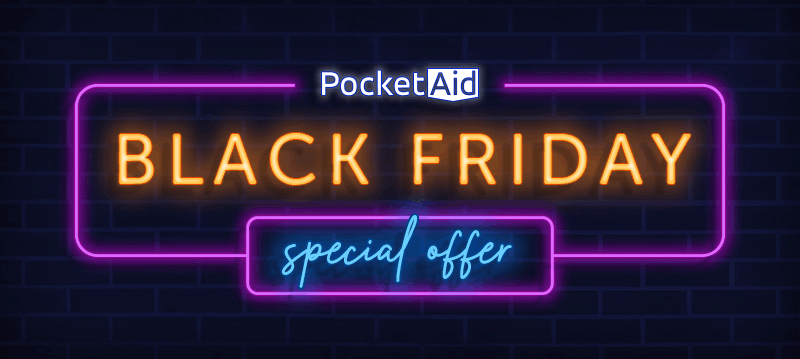Australia’s #1 Direct to Consumer Hearing Aids
New Zealand’s #1 Direct to Consumer Hearing Aids
600+ Five Star Reviews
Australia’s #1 Direct to Consumer Hearing Aids
New Zealand’s #1 Direct to Consumer Hearing Aids
600+ Five Star Reviews
By Don Hudson, CEO of PocketAid
Our headphone habits are ageing our ears faster than we realise, and the whole family needs to tune in before it’s too late.
We’ve always thought of hearing loss as something that starts to happen after retirement. It was Grandma asking you to repeat yourself or Grandpa cranking the TV up a few notches too loud. But new research suggests a jarring reality: in today’s headphone-heavy world, 30 is the new 50 when it comes to hearing.
As the CEO of PocketAid, I’ve spoken to thousands of families about the importance of hearing health. And what we’re hearing is concerning: teenagers and young adults experiencing tinnitus, reporting muffled sounds after long gaming sessions, and needing to raise the volume just to hear what they once heard clearly. The data now backs up these anecdotal observations. Young people are showing early signs of noise-induced hearing loss, and the common culprit is the prolonged and high-volume use of in-ear and over-the-ear devices.

Globally, an estimated 1.1 billion young people aged 12 to 35 are at risk of hearing loss due to unsafe listening practices, according to the World Health Organisation. That’s not a future problem – it’s a present one.
This isn’t a fringe concern. Multiple peer-reviewed studies have shown that a significant portion of the under-35 population regularly exceeds safe listening thresholds, placing them at risk of long-term hearing damage. Many are unknowingly damaging the sensitive structures of their inner ear. They’re doing it while streaming music, gaming for hours, or watching social media content – often in environments filled with background noise. Picture this: a teen on a bus surrounded by traffic noise and chatter, turning their music up past 90 decibels just to drown it all out. That level of sound, for more than an hour, can begin to permanently damage hearing.
What’s worse is how stealthy this damage can be. The first signs often go unnoticed: a faint ringing in the ears after a concert, or a feeling of fullness in the ears after a few hours with the headphones on. But even temporary tinnitus isn’t benign. It’s an alarm bell from your auditory system, a signal that the delicate cells in your inner ear have been overworked or damaged. Repeated exposure to unsafe volumes – even if symptoms seem to fade overnight – can cause cumulative damage that leads to lifelong consequences.
We must understand that tinnitus, even the kind that comes and goes, can be a clear sign of auditory trauma. It’s often the first indicator that your ears have been pushed too far. Think of it as the auditory equivalent of a sprain: you can walk on it again tomorrow, but the damage is already done, and repeated strain only makes it worse.
The problem isn’t just how loud the music is. It’s how loud, how long, and how often. These three dimensions are key to understanding hearing risk. Safe listening volume tops out at around 85 decibels – about the noise level of city traffic from inside a car. Exceed that, and safe listening time plummets. At 95 decibels (common with many headphones at high volume), your safe exposure time shrinks to under an hour. Do that daily, and your ears don’t get the recovery time they need.
A 2022 global review published in BMJ Global Health found that nearly 25% of young people regularly listen to personal audio devices at unsafe volumes. Combine that with environmental noise and long listening sessions, and we have the perfect storm for early-onset hearing damage. Many of these individuals don’t even realise they’re putting their hearing at risk.
This is why hearing health must become a family affair.
We shouldn’t be waiting until the first hearing aid fitting at 70 to talk about hearing loss. At PocketAid, we’re encouraging families to come together and try our free Hearing Aid Simulator. It gives every family member a realistic sense of what even mild hearing loss sounds like – and it’s often a wake-up call. Teenagers begin to understand just how precious (and vulnerable) their hearing really is.
The PocketAid Hearing Loss Simulator is a unique, free online tool designed to help people understand and explore hearing loss without stepping into a clinic. From the comfort of your own home, you can experience the real-world impact of hearing loss by simulating how everyday sounds are altered when using hearing support devices. It’s like taking a car for a test drive.
The simulator allows users to enter their audiogram or choose from preset hearing loss levels – mild, moderate or severe. From there, you can explore 12 everyday listening challenges, like talking on the phone, chatting in a crowded cafe or watching TV.
It’s not clinical or intimidating – it’s empowering. It gets families talking, engaging, and thinking seriously about their long-term hearing health, and about new options in technology such as over the counter hearing aids.
By bringing families into this conversation, we not only foster understanding but also support. It’s far easier for a teenager to make better listening choices when they understand what’s at stake, and when their parents and siblings are on board, too. Preventive care works best when it’s done together.
We need to foster that awareness now because the stakes are bigger than hearing alone. Numerous studies have linked hearing loss with cognitive decline, social withdrawal, and even elevated risks of dementia and Alzheimer’s disease. The auditory system is deeply connected to the brain, and when it goes underused due to hearing damage, the brain begins to suffer too.
Hearing loss doesn’t exist in isolation. It’s tied to our emotional wellbeing, our ability to connect with others, and our long-term cognitive function. And for young people, losing access to clear sound can mean challenges in education, social settings, and even employment. These are real, tangible consequences of something that seems as innocent as listening to your favourite playlist too loud.
Australia faces a looming cost burden if we don’t act. Hearing support services, hearing aids, and associated health care costs will skyrocket as more people enter midlife with advanced hearing loss. A 2020 report by Hearing Care Industry Australia projected that without intervention, the cost of hearing health services could surpass $30 billion annually by 2050.
If future generations are faced with having to fund their own hearing support, the cost of hearing aids can be eye-watering and beyond the reach of many.
We are at risk of creating a generation that needs lifelong support for a problem that is largely preventable. The earlier we address this, the more we can do to preserve quality of life and reduce public health spending.
The solution starts with awareness. Limit the volume. Take listening breaks. Use noise-cancelling headphones to reduce the need for louder settings. And most importantly, check in on your hearing health regularly – as a family.
Because when it comes to hearing loss, it’s no longer just about Grandma and Grandpa. It’s about all of us. And the time to act is now.
Don Hudson is the CEO and co-founder of PocketAid, an Australian health-tech company providing affordable, ready-to-use hearing aids online.
BLACK FRIDAY
Exclusive Offer


Get $40 Off Any Pair of Hearing Aids, 50% Off Accessories (excl. batteries), and $40 Off the TV Voice Pro Soundbar.
PLUS Receive an EXTRA 2 Years of Free Warranty (That’s 3 Years Total) on any pair of hearing aids. Valued at up to $299 – Absolutely Free.
Simply enter your email below and we'll send through your exclusive discount code.